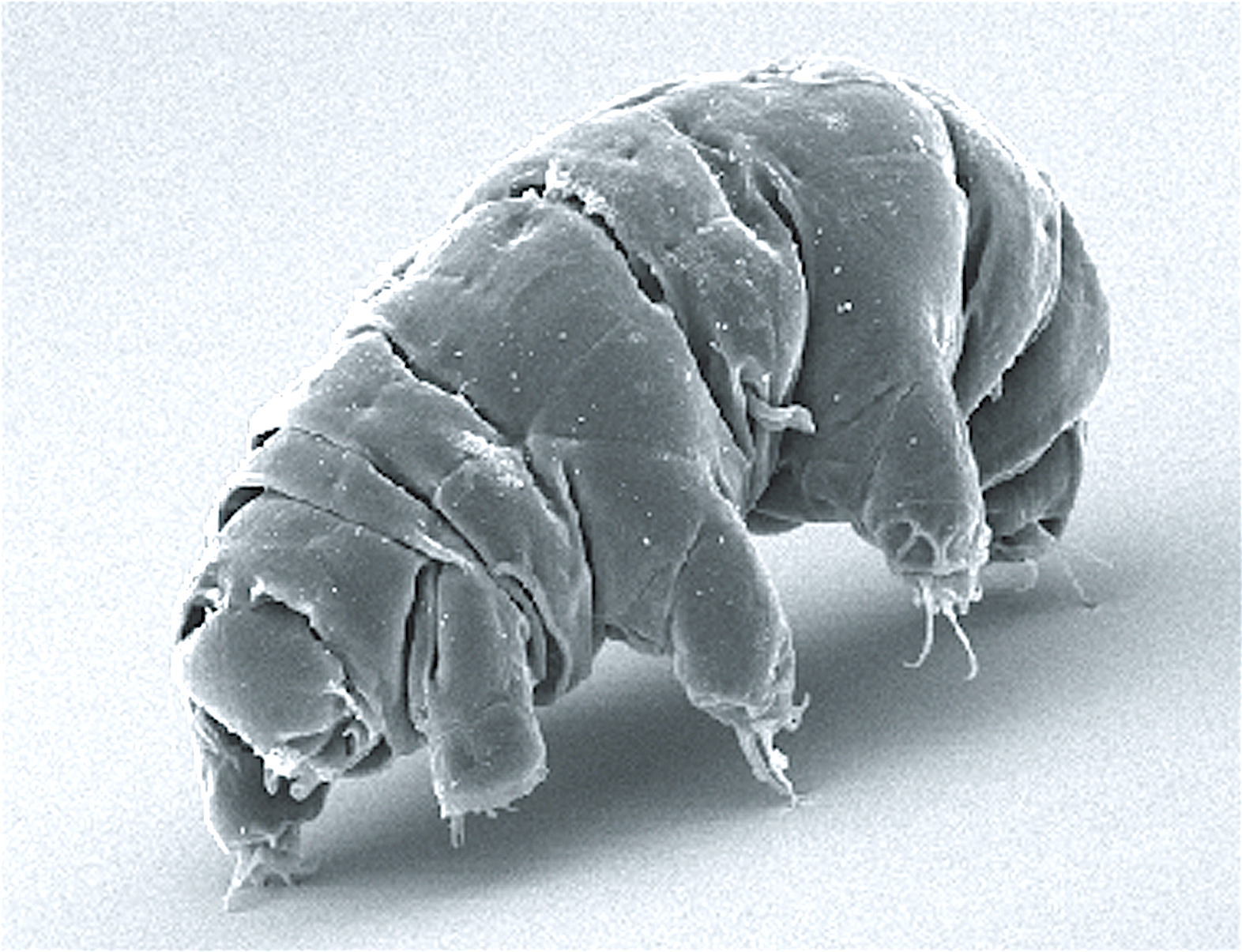You may know tardigrades by another name, whether it’s water bear or even moss piglets (thanks to an episode of the South Park TV show). The name tardigrade originated from a Spanish translation of “slow stepper.” There are approximately 1,300 known species of water bear within the phylum Tardigrada, which is believed to have originated over 500 million years ago.
Tardigrades are famous for their extreme adaptability and may perhaps be nature’s most durable creature. Water bears have been known to adapt to extreme temperatures and a wide range of environmental conditions including mountains, volcanoes, the Antarctic, and even have survived exposure in outer space. According to Smithsonian magazine, tardigrades can withstand environments as cold as minus 328 degrees F (minus 200 degrees C) or highs of more than 300 degrees F (148.9 degrees C). They can also survive radiation, boiling liquids and even massive amounts of pressure of up to six times the pressure of the deepest part of the ocean. Because of the resiliency of these organisms, it only seems appropriate they could also survive in activated sludge wastewater processes.
Tardigrade appearance
Water bears have eight legs with claws and a gait (head) that resembles a bear. Water bears vary in size and are one of the larger critters we see under the microscope in activated sludge processes (typically at 200x magnification, the size of the water bear will be larger or fairly close to the size of the entire field of view). The mouth of a water bear has hard little stylets, which it uses to pierce its prey and suck the contents out. The skin of a water bear is transparent, and it is often possible to view the contents of what it has recently eaten.
A normal lifespan of a water bear (uninterrupted by stressful conditions) is anywhere from 3 months to a little over 2 years. Water bears have a unique ability through a process called cryptobiosis to enter a “tun” state in which they can suspend their metabolism for up to 10 years or longer when exposed to stressful conditions. When conditions again become conductive to normal life functions, they simply reanimate and resume their life functions within a matter of hours.
As a metazoan, water bears are higher up on the food chain in activated sludge processes, while bacteria are responsible for the majority of biological wastewater treatment. In wastewater, water bears may prey on bacteria, plant matter, algae, or may be carnivorous, preying on nematodes and rotifers. Some species of water bear are even known to be cannibalistic and prey on other water bears.
Role in WWTP processes
From a practical standpoint, in wastewater processes, the presence of water bears typically indicates a higher sludge retention time and low ammonia concentrations (good nitrification), as ammonia is a recognized stressor. From an operational standpoint, the presence/absence of higher life form organisms such as water bears does not warrant any operational changes. While these critters are fun to look at, it is not recommended to make process control changes based on higher life form organisms, but rather from a holistic approach taking into consideration the MLSS concentration, sludge age, and findings from microscopy.
Microscopy assessment is based on floc structure; dispersed growth characteristics; zoogloea bacteria abundance; type and rank of various filamentous bacteria morphotypes (and their associated causes); impact of filaments on the floc structure; and process treatment goals.
Building a database
On a topic related to microscopy findings, Midwest Contract Operations is seeking operators willing to help build a database. The company is working with a genetic sequencing lab called Aster Bio to create a comprehensive database comparing microscopy findings to DNA analysis to allow for trending and “translation” for further understanding of the genetic diversity amongst filamentous bacteria morphotypes and other microbes observed in different types of samples.
For this database, the company is seeking treatment plants that would be interested in sending in samples in which microscopy and DNA would be tested. It will grant anyone willing to submit a sample access to the database and its use as a reference.
For more information or to volunteer to send samples to help build the database, email rhennessy@mco-us.com.
About the author: Ryan Hennessy is the microbiology and operations specialist at Midwest Contract Operations Inc. He was trained and mentored by Dr. Michael Richard for over 10 years in wastewater microbiology, and serves as a microbiology services consultant. Hennessy is a licensed wastewater treatment and municipal waterworks operator in the state of Wisconsin and fills in as needed for operations at several facilities. He can be reached at rhennessy@mco-us.com.






